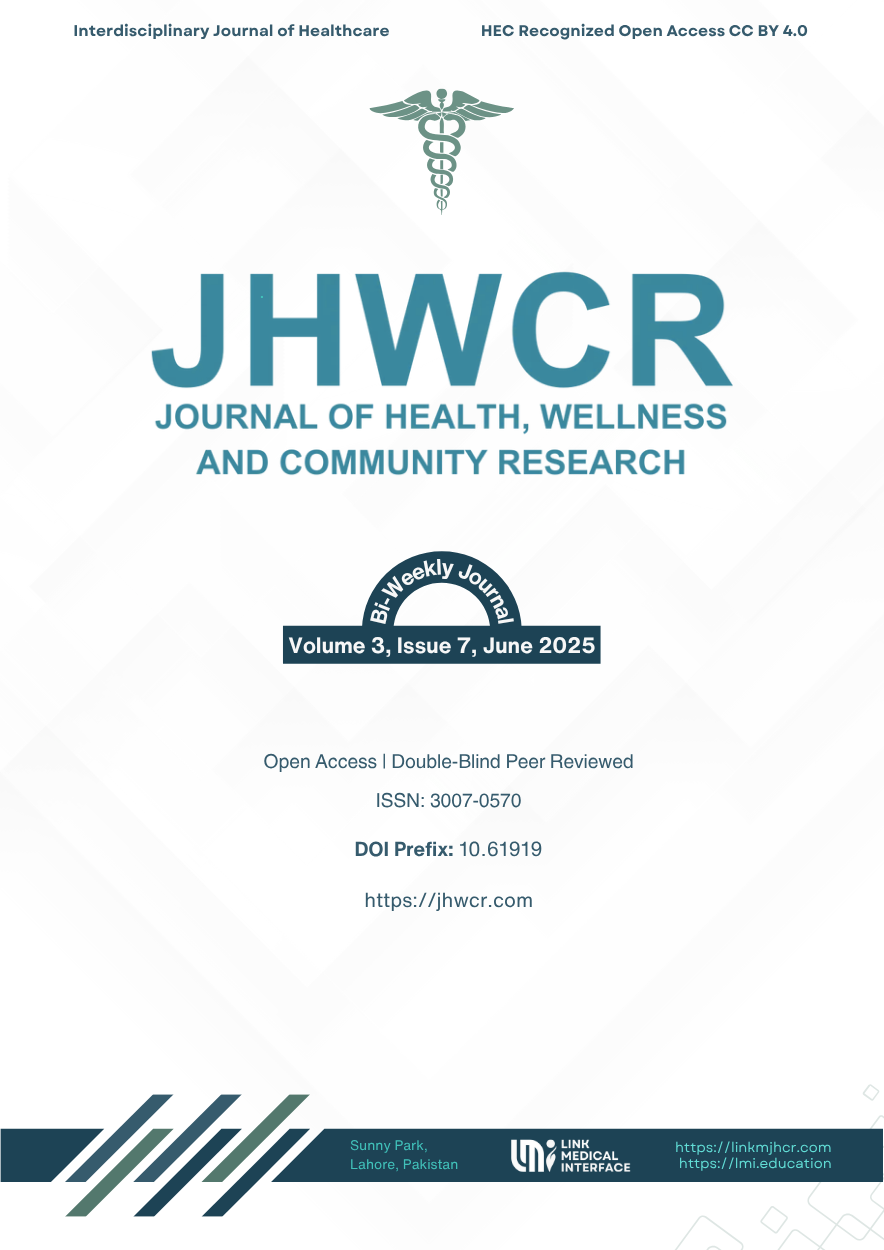Association of Hallux Valgus with Risk of Ankle Sprain in Female Sales Employees Wearing Heel
DOI:
https://doi.org/10.61919/1daa3y61Keywords:
Hallux Valgus, Ankle Sprain, High Heels, Occupational Health, Foot Deformity, Musculoskeletal Disorders, Female WorkerAbstract
Background: Hallux valgus and ankle sprain are common lower limb disorders among women, with occupational footwear such as high heels implicated in their development. Objective: This study aimed to determine the association between hallux valgus severity and risk of ankle sprain in female sales employees wearing pin, block, or wedge heels, hypothesizing that heel type influences both deformity prevalence and ankle instability. Methods: A cross-sectional observational study was conducted among 154 female sales employees aged 18–38 years in Lahore, Pakistan. Inclusion required a hallux valgus angle >15°, minimum one year of standing work, and absence of confounding conditions. Data collection included demographic surveys, goniometric and Manchester scale assessment for hallux valgus, and the IDFAI questionnaire for functional ankle instability. Statistical analysis using IBM SPSS v21 employed chi-square tests, ANOVA, and logistic regression to adjust for confounders. Ethical approval was obtained from the University of Management and Technology, and procedures adhered to the Helsinki Declaration. Results: Significant associations between hallux valgus severity and ankle sprain risk were found in pin heel (p=0.012, OR up to 5.54) and block heel groups (p=0.005, OR up to 10.8), but not wedge heels (p=0.301). Higher BMI and prolonged heel wear were also associated with increased risk. Conclusion: Hallux valgus deformity is significantly linked to ankle instability in women wearing pin or block heels, highlighting the need for occupational health interventions and ergonomic footwear choices to reduce musculoskeletal risk.
Downloads
Published
Issue
Section
License
Copyright (c) 2025 Farah Mukhtar, Muhammad Ahmed Saleemi, Tayyaba Umer, Shakeela Bibi, Mehak Tahir, Yashma, Eman Azam (Author)

This work is licensed under a Creative Commons Attribution 4.0 International License.


